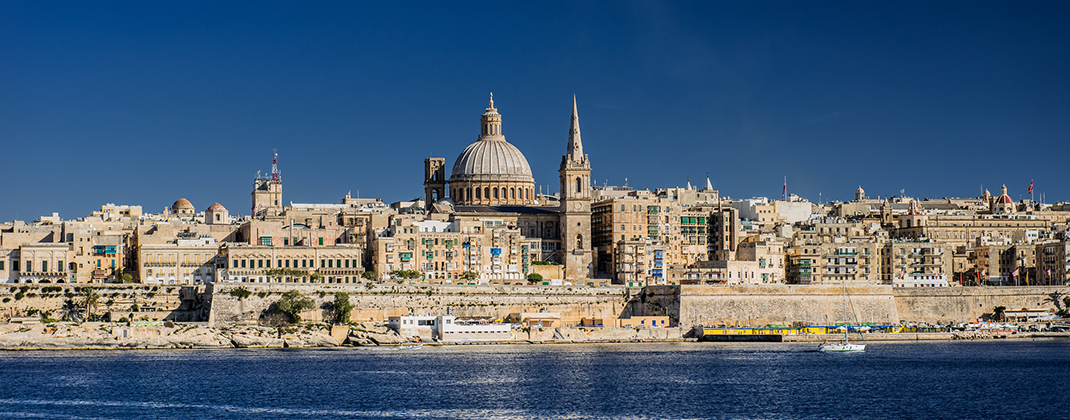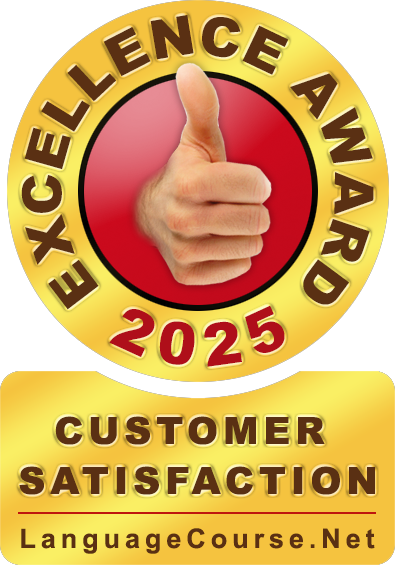Discover Malta – a sun-kissed Mediterranean archipelago where thousands of years of history meet a modern, vibrant lifestyle.
From UNESCO World Heritage Sites and centuries-old traditions to contemporary culture, friendly locals and a thriving economy, Malta blends timeless charm with forward-looking energy. Situated at the heart of the Mediterranean, the islands have served as crossroads for traders, explorers and empires for more than seven millennia, leaving behind a fascinating mix of architecture, cuisine and customs. Visitors can wander fortified cities, meander through fishing villages, dive into crystal-clear waters, and enjoy a calendar of festivals and events that celebrate Malta’s diverse heritage. With English widely spoken, a safe environment, excellent infrastructure, and a year-round mild climate, Malta offers an inviting blend of authenticity, accessibility and adventure for travellers, students and professionals alike.

Country Overview
Full name: Republic of Malta
Size: 316 km² spread over three main islands (Malta, Gozo and Comino).
Population: ~542,000 (2024)
Capital: Valletta (approx. 6,000 inhabitants)
Inhabitants: Maltese
Languages: Maltese and English (official)
Religion: Predominantly Roman Catholic (≈83%) with growing diversity
Government: Parliamentary Republic
President: Myriam Spiteri Debono (since 2024)
Prime Minister: Robert Abela
EU Member Since: 2004 (also part of the Schengen Area since 2007)
Neighbouring countries: Closest to Sicily (93 km north) and North Africa to the south
Economy
Currency: Euro (€) since 1 January 2008
GDP: ~€18 billion (2024 est.)
GDP per capita: ~€33,000 (2024 est.)
Main industries: Tourism, financial services, gaming & IT, manufacturing, pharmaceuticals, shipbuilding and repair, aviation services.
Emerging sectors: Digital finance, AI, green energy and film production.
Main trading partners: Italy, Germany, France, UK, US, and North Africa.
VAT: Standard 18%, reduced rates for accommodation and certain goods/services.
Employment: Low unemployment rate, strong expat workforce, incentives for start-ups.
Inflation: Generally stable and among the lowest in the EU.
Daily Life & Essentials
Time zone: Central European Time (GMT+1), GMT+2 in summer.
Electricity: 240V, 50Hz. Three-pin UK-style plugs (Type G).
Weights & Measures: Metric system.
Healthcare: Universal healthcare system with public and private hospitals; reciprocal agreements with EU countries.
Emergency Numbers: 112 for police, fire and ambulance.
Postal Services: MaltaPost offers efficient mail and courier options across all islands.
Climate: Mediterranean – hot, dry summers and mild, wet winters.
Driving: On the left side of the road. EU driving licences accepted.
Public Facilities: Widespread Wi-Fi in public areas and free public water fountains in some towns.
Culture & Heritage
UNESCO Sites: Valletta, Ħal Saflieni Hypogeum, Megalithic Temples.
Festivals: Village feasts, Carnival, Isle of MTV, Notte Bianca.
Traditional Music & Dance: Għana folk singing, Maltese folk dances.
Arts: Vibrant local galleries, theatre, and film festivals.
Cuisine: Pastizzi, rabbit stew, ftira, and fresh seafood.
Transport & Accessibility
International Airport: Malta International Airport (MLA), 8 km from Valletta.
Public Transport: Efficient bus network connecting all main towns and islands.
Ferries: Regular ferries to Gozo and Comino, plus seasonal routes to Sicily.
Car Rental: Widely available, driving on the left.
Cycling & Walking: Growing network of scenic paths and promenades.
Tourism Highlights
Beaches: Golden Bay, Mellieħa Bay, Blue Lagoon (Comino).
Historic Sites: Mdina, Birgu, Fort St. Elmo, St John’s Co-Cathedral.
Diving & Watersports: Snorkelling, scuba diving, sailing, kayaking.
Nightlife: Paceville clubs, rooftop bars, and music festivals.
Family Activities: Popeye Village, Mediterraneo Marine Park, nature reserves.
Malta is a unique blend of history, culture, and modern lifestyle. From its sun-soaked beaches and historic cities to its thriving economy and welcoming communities, the islands offer an enriching experience for visitors, students, and professionals alike. Whether exploring UNESCO heritage sites, sampling local cuisine, diving into the Mediterranean waters, or connecting with the vibrant local culture, Malta promises an unforgettable journey filled with discovery and inspiration.







